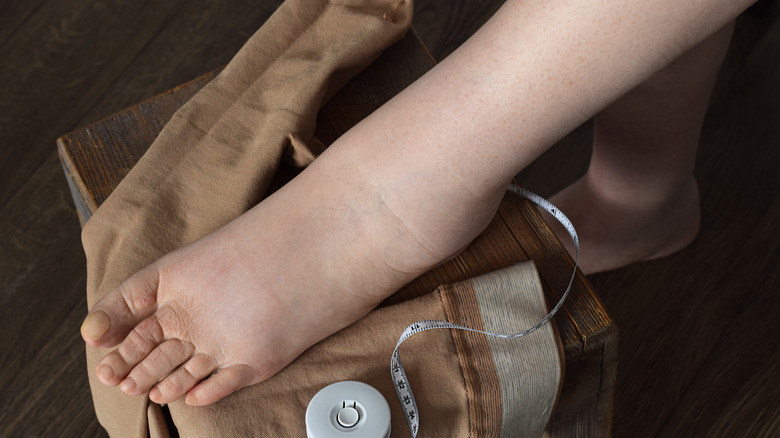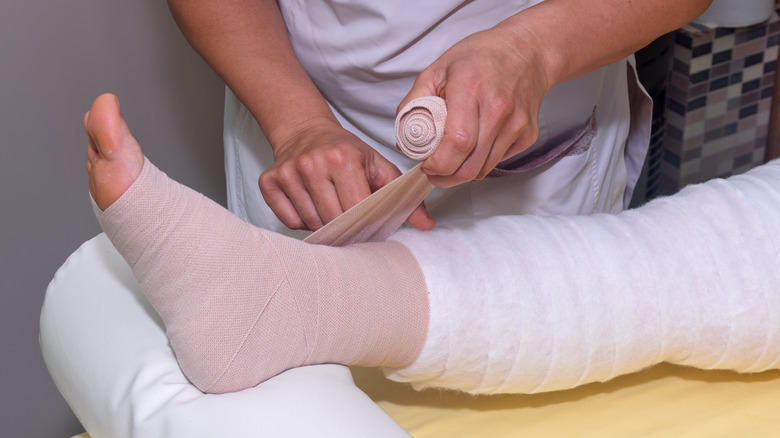What You Need To Know About Lymphedema Therapy
Lymphedema is a disease that causes swelling in the legs, arms, thighs, chest wall, and genitals (via Mayo Clinic). The swollen regions are caused by a build-up of protein-rich fluids that the body's lymphatic system cannot remove. It consists of blocked lymph nodes that retain wasteful fluid. If you have lymphedema, you may notice hardened skin in certain regions, per the National Health Services (NHS). Additionally, it may cause recurring skin infections, a heavy feeling in the limbs, bleeding, pus, or wart-like growths throughout the body.
The risk of developing lymphedema is more common in people who have cancer or are undergoing cancer treatments. According to a 2022 study in StatPearls, a lymphedema diagnosis is either genetic or acquired, and both vary in prevalence. Statistics in the U.S. show that genetic lymphedema is comparatively rarer, affecting 1 in 100,000 individuals. Whereas, acquired lymphedema affects 1 in 1000 people in the country. Doctors usually recommend various kinds of treatments for lymphedema symptoms. One of the most effective treatments is lymphedema therapy, which despite being time-consuming, offers miraculous benefits for controlling symptoms, explains NHS.
How does lymphedema therapy work?
Lymphedema therapy is also known as decongestive lymphatic therapy (DLT), according to NHS. This type of therapy requires the use of compression bandages. Compression bandages are helpful for mildly swollen regions as they can prevent the symptoms of lymphedema from worsening (per Cancer Research UK). The bandages do not limit your movement but instead, build pressure on the swelling. Most are quite comfortable but it's important to select bandaging that covers the entire region. Another important component of lymphedema therapy is taking care of your skin, per NHS. Cancer Research UK recommends keeping your skin well moisturized and hydrated to minimize the risk of infections. If there are any cuts or wounds, use an antiseptic ointment over the area.
Exercising is also a critical aspect of lymphedema therapy, as per NHS. If weight loss is your primary goal, you may want to perform exercises that target BMI reduction, according to Toronto Physiotherapy. Some patients may need resistance exercises, as they show the best results against swelling and pain. Yoga is another good option since a few poses specifically help improve lymphatic drainage. Lastly, NHS recommends a manual lymphatic drainage (MLD) massage, which involves various techniques to get the excess fluid to flow and ease the swelling.


